The Data Interpretation and Logical Reasoning section of the CAT exam has been the pain-point for lakhs of aspirants who have taken the test in the past. Unlike the QA section, the DI-LR section doesn't differentiate between engineers and non-engineers - its wrath is showered upon everyone equally, as was the case in CAT 2017.
The biggest challenge one faces while preparing for this section is that there is no defined syllabus or one 'bible' that can be referred to feel comfortable and completely prepared during those 60 minutes in the actual exam. Recommendations to prepare for this section range from solving Sudoku puzzles every day to daily solving sets from books prescribed by coaching centers. While this may help you prepare, it will pay off to first ask the question - What exactly does CAT test in the DI-LR section? This analysis of past five years' CAT papers can help you find the answer.
Note - This article will not provide a prediction of what you will see in the DI-LR section of the CAT exam but is an analysis of trends that have emerged in 10 CAT papers in the past five years. You can get free access to the CAT 2017, CAT 2018 and CAT 2019 Slot 1 and Slot 2 papers here.
What Is Data Interpretation In CAT? What Type of DI Questions Are Asked On The CAT Exam?
Data Interpretation (DI) is, as the name suggests, understanding and interpreting data provided in the form of charts, graphs, and tables and then answering questions based on the provided information. Most DI questions are based on basic arithmetic operations and topics such as percentages, ratios, profit and loss, averages etc. In the CAT exam, there are usually 16 questions (4 sets) of Data Interpretation.
Given that this is a competitive aptitude test, don't expect straightforward questions based on simple charts, graphs and tables, as is provided in the study material for some coaching institutes and best-selling CAT preparation books. For instance, take a look at this relatively easy but daunting data set from CAT 2019 which shows a radar chart, a.k.a. a spider chart.

We know that DI questions in CAT can be visually daunting, but they can also be made complex by segmenting information into two or more complementary sets of data, as was the case in this question where information was split into a stacked bar chart as well as a table, followed by difficult questions based on the provided information.
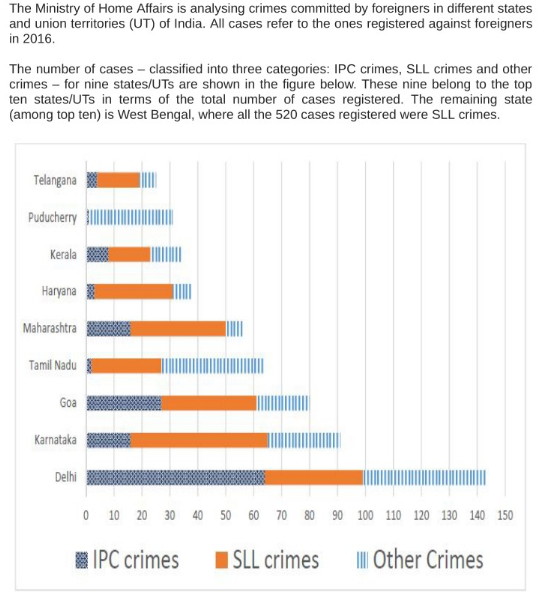
The table below shows the ranks of the ten states/UTs mentioned above among ALL states/UTs of India in terms of the number of cases registered in each of the three category of crimes. A state/UT is given rank r for a category of crimes if there are (r‐1) states/UTs having a larger number of cases registered in that category of crimes. For example, if two states have the same number of cases in a category, and exactly three other states/UTs have larger numbers of cases registered in the same category, then both the states are given rank 4 in that category. Missing ranks in the table are denoted by *.
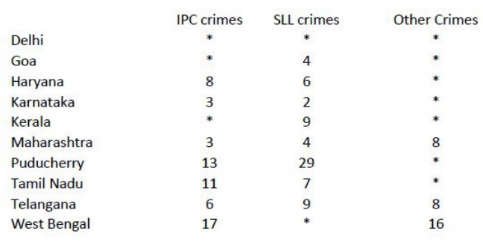
What Is Logical Reasoning In CAT? What Type of LR Questions Are Asked On The CAT Exam?
Logical Reasoning (LR) questions on the CAT exam test your ability to fill out the gaps in provided information and/or create a coherent structure around provided information that can help you answer complex questions. LR sets can be based on the concept of arrangements, matrices, games and tournaments, puzzles, etc. Mathematical operations may also be involved in solving certain LR sets, such as basic arithmetic operations along with concepts of progressions, probability, set theory, etc. There are usually 16 LR questions (4 sets) in the section.
LR sets have never been straightforward in the CAT exam. Even simple concepts like arrangements and matrices can be contorted to confuse you. For instance, take a look at this complex LR set from Slot-1 of the CAT 2017 exam, where one was supposed to interpret a 5*5 square matrix to answer given questions. This set was considered to be of moderate level of difficulty even though the information provided and the matrix itself do not seem too complex. You can try out this question here.
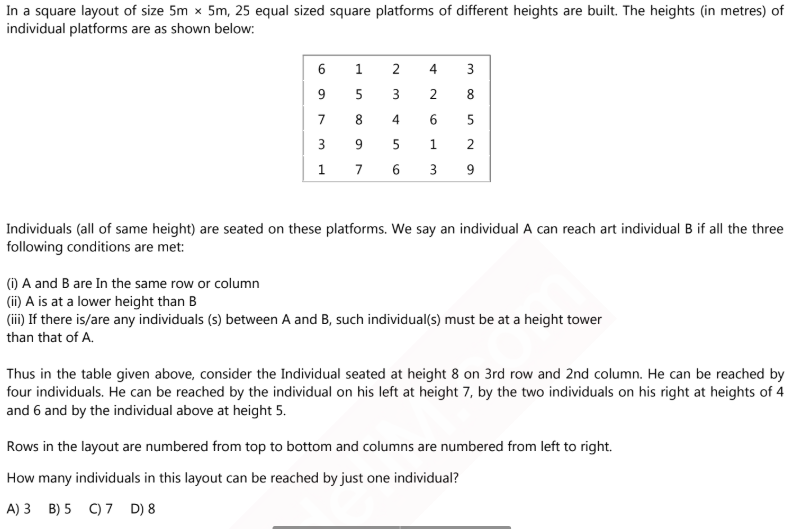
The CAT exam, as recent as CAT 2018, has also tested topics that are usually found in relatively easier exams like NMAT and MAH-CET, such as this set in Slot-2 of CAT 2018 on coding-decoding. However, the level of difficulty is many notches above than what can be seen in aptitude tests like NMAT. This particular question has been categorized under the 'Difficult' section by both TIME and IMS, along with other coaching institutes.
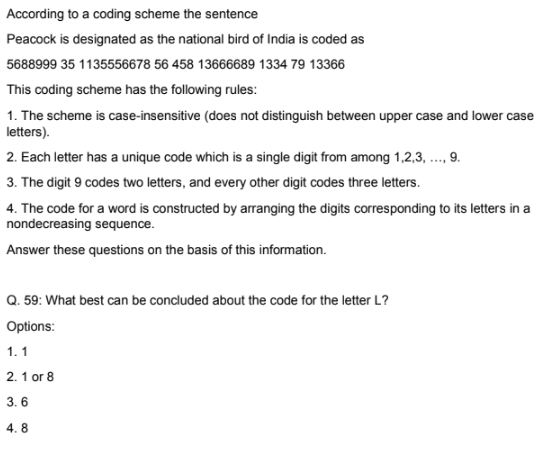
How Difficult Is The DI-LR Section In The CAT Exam?
The table below takes a look at the level of difficulty of questions across both slots of the CAT exam from 2015 to 2019. Categorization has been based on past papers' analysis by IMS, and is split across 5 levels of difficulty. The numbers (a,b) in each cell represent questions in (Slot 1, Slot 2).
| CAT 2019 | CAT 2018 | CAT 2017 | CAT 2016 | CAT 2015 | |
| Level of Difficulty | Number of Questions | Slot 1, Slot 2 | ||||
| Difficult | 8,8 | 8,8 | 8,4 | 0,4 | 0,16 |
| Moderate-Difficult | 4,0 | 0,4 | 16,8 | 0,0 | 16,4 |
| Moderate | 8,16 | 0,8 | 8,4 | 8,12 | 16,12 |
| Easy-Moderate | 12,0 | 8,8 | 0,4 | 16,8 | 0,0 |
| Easy | 0,8 | 16,4 | 0,12 | 8,8 | 0,0 |
In the past 5 years, two exams stand out in terms of difficulty - CAT 2015 and CAT 2017. Of the two, the former was the most difficult that has been seen in half a decade, with not a single easy or easy-moderate level question in any of the 8 sets in the section.
Across CAT 2016, CAT 2018, and CAT 2019, 62.5% to 100% of the questions in Slot 1, and 62.5% to 87.5% of the questions in Slot 2 were of easy to moderate level. This means that in the DI-LR section of these tests, up to 20 questions (5 sets) were doable, if time permitted. But is this going to be the case in the DI-LR section of CAT 2020 as well? That cannot be determined with any certainty.
Based on the table above, what can be determined is that you can expect at least 1 and up to 4 difficult sets in CAT 2020. You can also expect at least 2 and up to 4 sets of moderate difficulty level. It is also possible to see a minimum of 1 and a maximum of 4 easy level sets in the DI-LR section of CAT 2020, though it seems less likely given that the past 3 versions of the CAT exam have had a relatively easier DI-LR section.
Also read - Most Important Topics For CAT 2020's Quant Section - Analysing Past Years' CAT Papers
How Much Do You Have To Score To Get A 99th Percentile Score In The DI-LR Section of The CAT Exam?
The DI-LR percentile cut-off for the old IIMs has been in 70th to 85th percentile range, i.e., to even stand a chance of getting a call from an IIM, you must have a minimum sectional percentile in this range, though that is still not a guarantee of being shortlisted since your overall CAT score along with your profile is also used to create your composite score. Therefore, while it's important to meet the minimum cut-off, it is also important to try to boost your overall CAT score by scoring better in this section that most aspirants fear.
The table below encapsulates DI-LR scaled scores vs percentile in CAT 2017, CAT 2018, and CAT 2019.
Note - The data for CAT 2019 score vs percentile has been obtained through primary research conducted by InsideIIM. The data for CAT 2018 and 2017 has been obtained from publicly available information.
| CAT 2019 | CAT 2018 | CAT 2017 | |
| Percentile | Score | ||
| 99th Percentile | 52 | 46 | 45 |
| 98th Percentile | 48 | 41 | 40 |
| 95th Percentile | 39 | 35 | 33 |
| 90th Percentile | 32 | 29 | 28 |
The more difficult to solve a particular section is, the lower is the cut-off to score a 99th percentile in the section. From the table above, it is clear that CAT 2017 was significantly tougher than CAT 2019, which has been corroborated by feedback from students as well as in-depth analyses by leading CAT coaching organisations.
How Many Questions Should You Attempt To Score Between A 90th & 99th Percentile Score In The DI-LR Section?
Assuming that the paper pattern is not altered for CAT 2020, how many questions should you solve in the DI-LR section to be in the 90th-99th percentile score range? What is the difference in the no. of questions to be attempted to achieve a 99th percentile score and 90th percentile score?
The table below encapsulates the minimum number of questions you'd have to attempt with 100% accuracy to achieve a 90th, 95th or 99th percentile score in the DI-LR section of the CAT exam in the past three years.

The following are important inferences from the table above:
- The difference between a 99th and 95th percentile score is of 4-5 questions, or 12-15 marks.
- The difference between a 99th and 90th percentile score is of 5-7 questions, or 15-21 marks.
- Depending on the difficulty level of the exam, you will have 3 min 20 sec to 4 minutes per question to achieve a 99th percentile score.
Which DI-LR Topics Are Most Questions Asked From In The CAT Exam?
The syllabus for the Data Interpretation and Logical Reasoning section of the CAT exam is hard to define. However, there are certain types under which DI-LR questions can be categorized, which allows for certain trends to emerge.
IMS, a leading CAT coaching organisation, has put DI-LR questions under various categories in their CAT exam analyses. Based on their categorization, the table below has been created, capturing the percentage of questions asked in both slots of the CAT exam from 2019 to 2015. For simplicity, the average of the number of questions asked per category in both slots of the exam has been considered and then converted to a percentage.
| CAT 2019 | CAT 2018 | CAT 2017 | CAT 2016 | CAT 2015* | |
| Arrangements | 13% | 19% | 25% | 0% |
13%
|
| Grouping & Conditionality | 6% | 6% | 0% | 6% | |
| Games & Tournaments | 13% | 0% | 0% | 0% | 0% |
| Puzzles | 19% | 19% | 25% | 44% | 38% |
| Scheduling | 6% | 0% | 0% | 0% | 0% |
| Miscellaneous | 6% | 6% | 0% | 0% | 0% |
| DI - Reasoning Based | 19% | 19% | 31% | 25% |
38%
|
| DI - Calculation Based | 13% | 31% | 19% | 25% | |
| DI - Observation Based | 6% | 0% | 0% | 0% | 13% |
| *For CAT 2015, topics have been combined due to the nature of questions asked. | |||||
When it comes to Logical Reasoning, questions on Puzzles have featured in every single CAT exam in the past five years. Puzzles can include topics like Matrices, Coding-Decoding, Math Puzzles, etc.
Questions on Arrangements have featured in 4 out of 5 CAT exams in the past five years. These questions can be based on linear arrangements, circular arrangements (facing inward/outward), and other miscellaneous topics.
Grouping and Conditionality questions have also featured in 4 out of 5 CAT exams in the past five years. To get an idea of what a Grouping and Conditionality question looks like, take a look at this set from Slot-2 of CAT 2019.
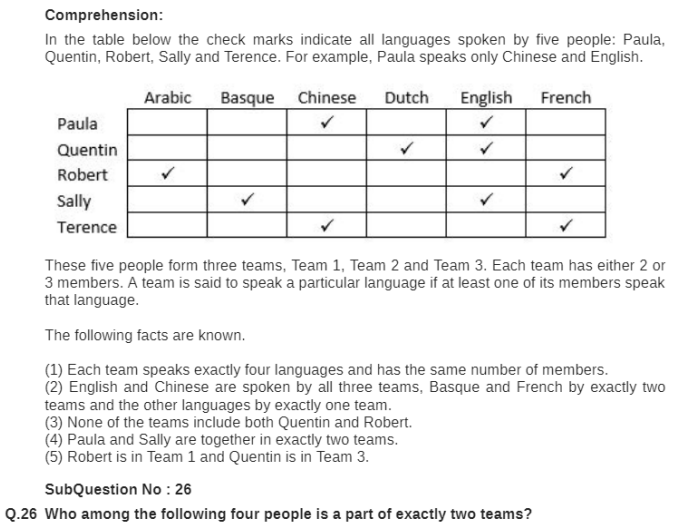
When it comes to Data Interpretation, the CAT exam has been dominated by Reasoning-based and Calculation-based DI sets.
Calculation-based DI sets include sets on growth rates, market shares, values and volumes of products, etc. These sets are calculation intensive questions and require a good grasp over arithmetic operations and speed maths. Reasoning-based DI sets, as the name suggests, requires application of logical reasoning to arrive at a solution. These sets may not present information overtly via charts, graphs, or tables. To understand what a Reasoning-based DI set looks like, take a look at this question from Slot-2 of CAT 2019.

Observation based DI sets are, as the name suggests, sets that can be solved simply by observing presented data. A good example is a DI set based on a scatter graph describing millimetres of rainfall in various locations across various years, followed by questions like "Which year saw the maximum increase in overall rainfall across all 6 regions?", or, "Which of the following pairs of regions correspond to regions with maximum and minimum percentages increase in rainfall from 2016-2018?"
Recommended For You
- Tackling the DI-LR Monster | Tips And Strategy By A 99.99 Percentiler
- How To Score A 99 Percentile In The DI-LR Section - Tips From An IIM Ahmedabad Student
- From Dreading LRDI To Scoring 99.45% In LRDI – Here’s How I Improved!
- Most Important Topics For CAT 2020's Quant Section - Analysing Past Years' CAT Papers
